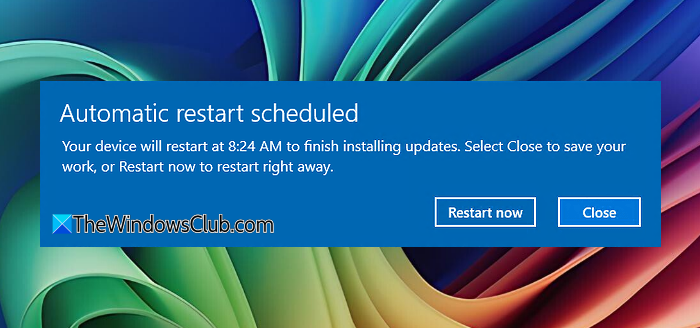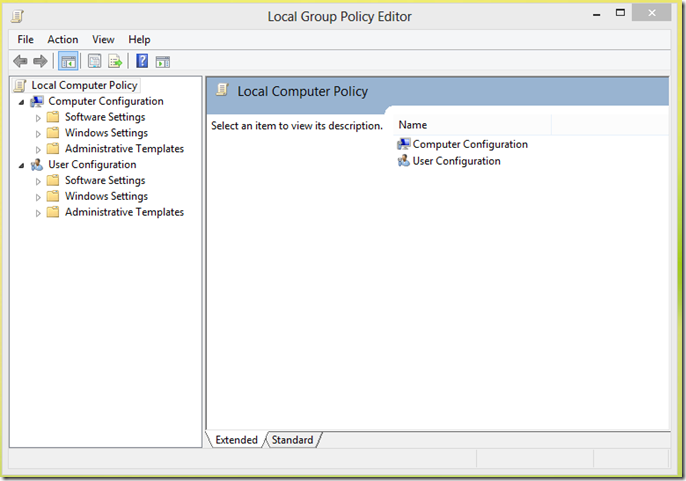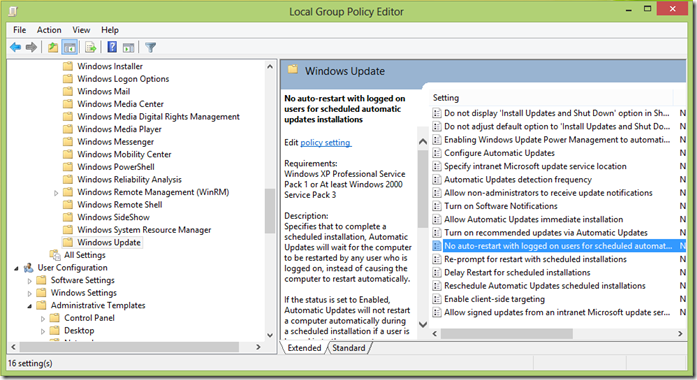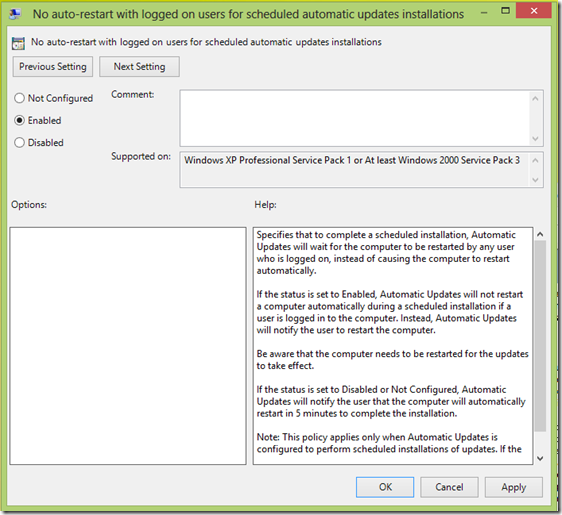This post will show you how to disable Automatic Restart after Windows Update in Windows 11/10. One of the annoying things about Windows 11/10 is the Windows Update will restart message. I have seen some users reporting that it restarts when you are in the middle of doing something, or it may say that I will automatically restart after 1 day. Well, there are ways to disable Windows auto-restart after Windows Updates – one by using the Group Policy Editor and the other via the Windows Registry. Windows 11/10 also offers you an additional option.

Stop automatic restarts after Windows Update

Disable automatic reboot after Windows Update using Group Policy
To disable Automatic Restart after Windows Update, using Group Policy, take these steps:
- Press Win + R and type in gpedit.msc

- Go to Computer Configuration > Administrative Template > Windows Component > Windows Update
- Right click on “No auto-restart with logged on users for scheduled automatic updates installations”
- Select “Enable” click on Apply and click on OK.
Related: Specify Engaged restart transition and notification schedule for Updates
Prevent Windows Update Automatic Restart using Registry Editor
To disable Automatic Restart after Windows Update using Registry Editor, open REGEDIT and navigate to the following key:
HKEY_LOCAL_MACHINE\SOFTWARE\Policies\Microsoft\Windows\WindowsUpdate\AU
If you don’t see it, create one. You may have to create \WindowsUpdate\AU.
Now under this key, create a new 32-bit DWORD called NoAutoRebootWithLoggedOnUsers and give it a hexadecimal value data of 1.
This will prevent automatic reboot while users are logged on.
This should stop Windows from automatically restarting your computer after Windows Updates.
Keep changing work hours in Windows to avoid stop auto restarts for Update
Windows doesn’t reboot during working hours and has a dedicated setting where you can define that. To avoid rebooting because of the strict rules, you can keep changing working hours using PowerShell commands.
for /f %%i in ('powershell "((get-date).Hour+18) %% 24"') do set startHour=%%i
for /f %%i in ('powershell "((get-date).Hour+12) %% 24"') do set endHour=%%i
reg add HKLM\SOFTWARE\Microsoft\WindowsUpdate\UX\Settings /v ActiveHoursStart /t REG_DWORD /d %startHour% /f
reg add HKLM\SOFTWARE\Microsoft\WindowsUpdate\UX\Settings /v ActiveHoursEnd /t REG_DWORD /d %endHour% /f
Save this file as a BAT file, and then use Windows Task Scheduler to make this script run every hour for 1 day and repeat daily. Additionally, you can add a minimized option to stop pop-ups of the command windows, make the task scheduler start the program/script “cmd.exe” and put as its arguments:
/c start /min C:\work\delayautoupdate.bat ^& exit
Use Quiet Hours or Focus Assist in Windows
In Windows 10 users will have to use Quiet Hours. Windows 11 users will have to use Focus Assist.
How to disable Automatic Restart after Windows Update
To stop automatic reboots after Windows Update, navigate to Settings > Windows Update > Advanced options. Under ‘Active hours’, disable ‘Restart this device as soon as possible…’.
Read: How to disable Automatic Restart on System Failure in Windows
How do I turn off auto-restart notifications for update installations?
To turn off auto-restart notifications for update installations, open the Group Policy Editor. Navigate to Computer Configuration > Administrative Templates > Windows Components > Windows Update. Locate and double-click on “Turn off auto-restart notifications for update installations,” then set it to “Enabled” to deactivate those notifications.
TIP: Did you know? You can now force an Automatic restart after Windows Updates.

